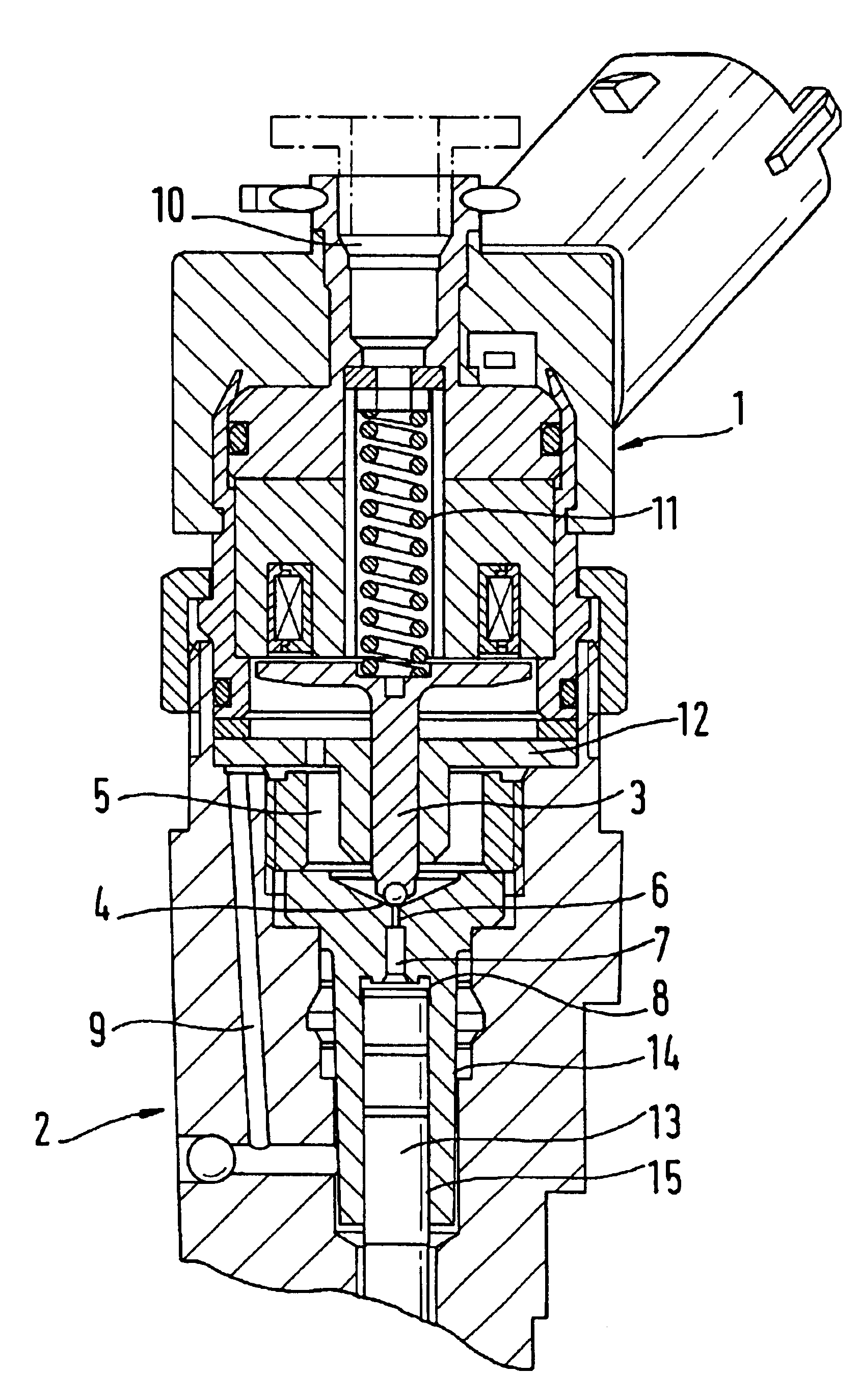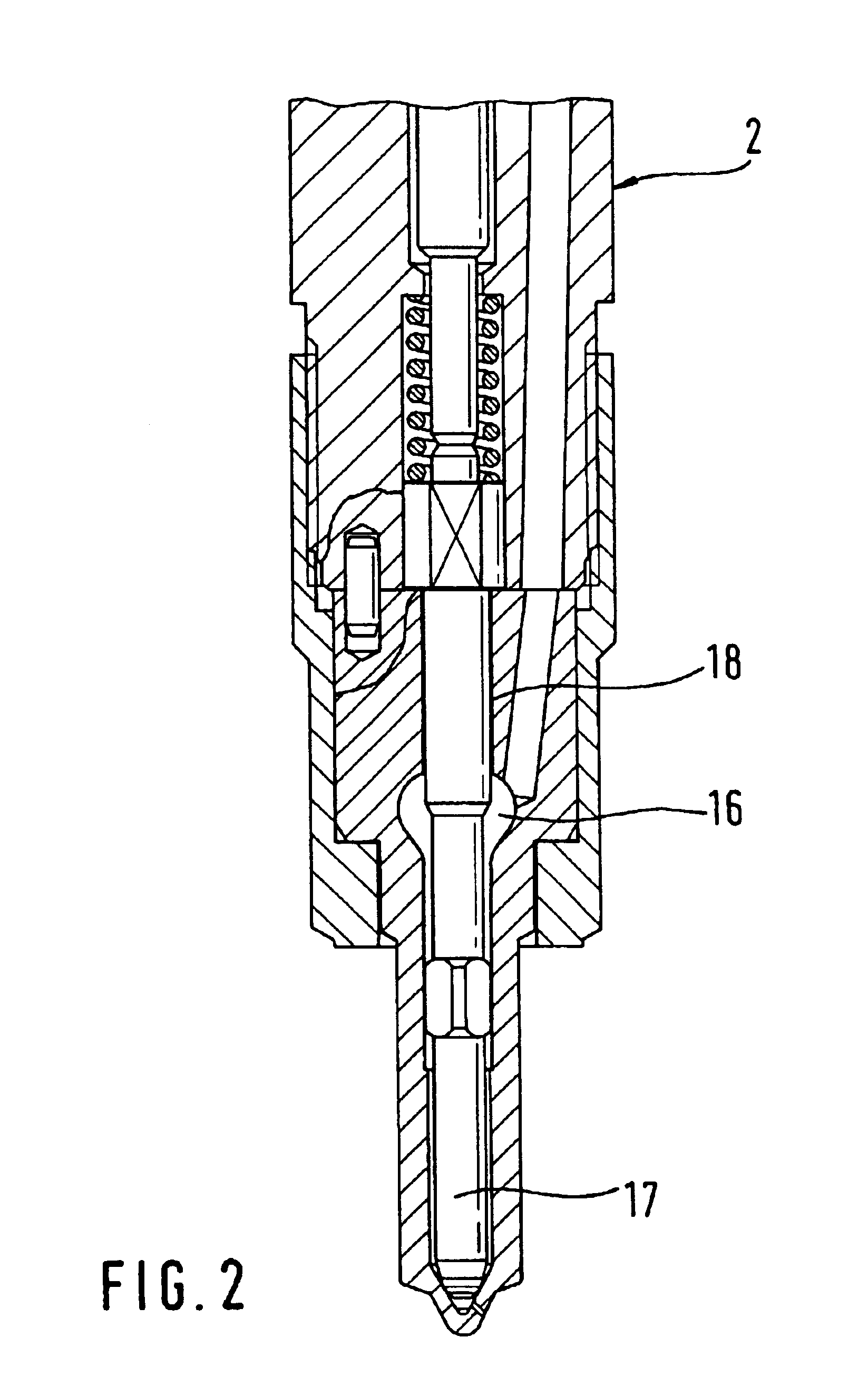Injector with a magnet valve for controlling an injection valve
a magnet valve and injection valve technology, applied in the field of injectors, can solve problems such as delay in the closure of the nozzle needle, and achieve the effects of less variation in the injection quantity, improved engine noise and emissions values, and improved engine performance values
- Summary
- Abstract
- Description
- Claims
- Application Information
AI Technical Summary
Benefits of technology
Problems solved by technology
Method used
Image
Examples
Embodiment Construction
FIG. 1 shows the usual design of an injector, of the kind used particularly for fuel injection in common rail systems, comprising a magnet valve 1 and an injection valve 2. In the sketch, only the parts of the injector that are essential to the invention are identified by reference numeral. The one-piece armature 3 is drawn upward, counter to the spring force of the armature spring 11 as a result of supplying current to the magnet valve 1. The armature 3 travels in the armature guide 12, and when no current is supplied to the magnet valve 1, the armature rests on the valve seat 4 of the injection valve 2. In this state, the fluid communication is interrupted with the control pressure chamber 8 of the injection valve 2 by closing off the outlet throttle 6 and the bore 7. When the magnet valve is supplied with current, conversely, the outlet throttle 6 opens, and the pressure in the control pressure chamber 8 drops, since fluid can now flow from the control pressure chamber 8 into the...
PUM
 Login to View More
Login to View More Abstract
Description
Claims
Application Information
 Login to View More
Login to View More - R&D
- Intellectual Property
- Life Sciences
- Materials
- Tech Scout
- Unparalleled Data Quality
- Higher Quality Content
- 60% Fewer Hallucinations
Browse by: Latest US Patents, China's latest patents, Technical Efficacy Thesaurus, Application Domain, Technology Topic, Popular Technical Reports.
© 2025 PatSnap. All rights reserved.Legal|Privacy policy|Modern Slavery Act Transparency Statement|Sitemap|About US| Contact US: help@patsnap.com



